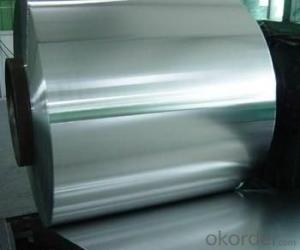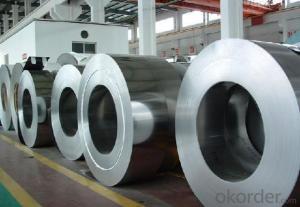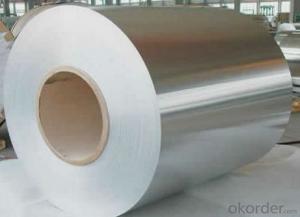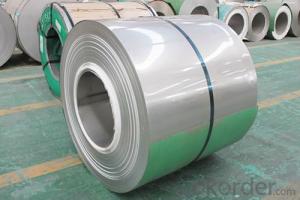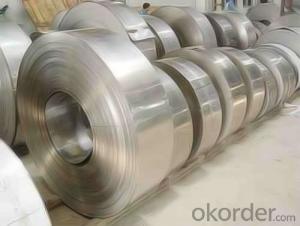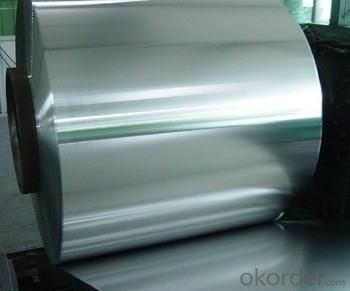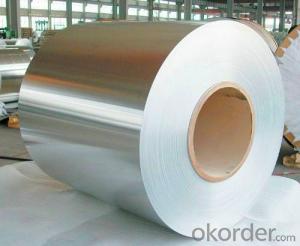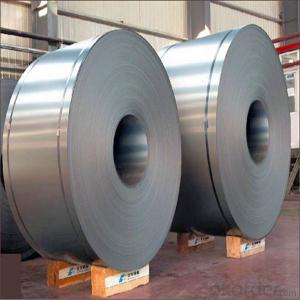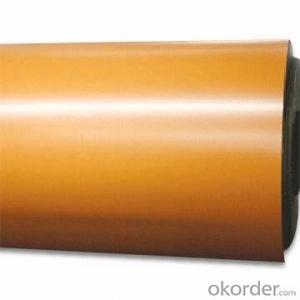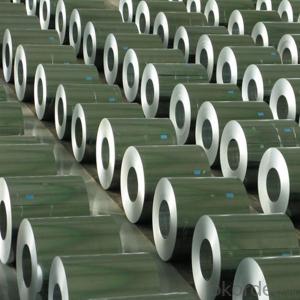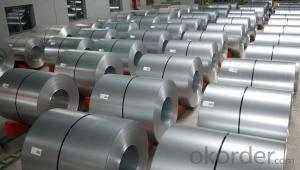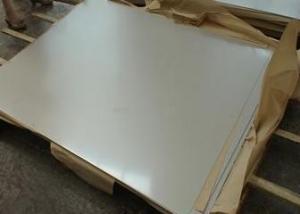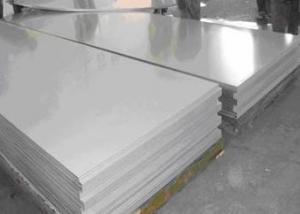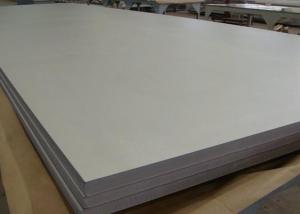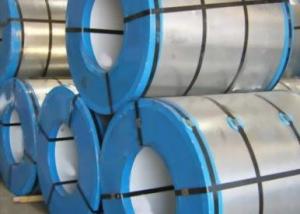HONGRI stainless steel coil with high quality 310s ba
- Loading Port:
- Guangzhou
- Payment Terms:
- TT OR LC
- Min Order Qty:
- 20 m.t.
- Supply Capability:
- 500 m.t./month
OKorder Service Pledge
OKorder Financial Service
You Might Also Like
Product name | 310s ba stainless steel coil with high quality |
Specification | Thickness: Cold rolled: 0.3-3mm, Hot Rolled: 3-120mm Width: 500-2000mm Length: 1000-6000mm Customized sizes are accepted |
Standard | ASME, ASTM, EN, BS, GB, DIN, JIS, etc |
Finish | NO.1, NO.4, 2B, BA, HL, 8K, Mirror finish and so on |
Material | 201, 202, 304, 304L, 310S, 316, 316L, 410, 420, 430, 441, 800H, 904L |
Brand Name | HONGRI |
Place of Origin | Jiangsu of China (Mainland) |
Technical treatment | Cold Rolled, Hot Rolled |
MOQ | 20 Metric Ton |
Port of Loading | GUANGZHOU |
Terms of Delivery | FOB, CFR, CIF, CNF, EXWORK |
Terms of Payment | L/C, T/T (30% desipot) |
Packing | Standard export sea-worthy packing |
Delivery time | Within 7days after recieve 30% desipot or as your requirement |
Stock | Ready in stocks |
310s ba stainless steel coil with high quality
Grade | C ≤ | Si ≤ | Mn ≤ | P ≤ | S ≤ | Ni ≤ | Cr ≤ |
201 | 0.12 | 0.75 | 7.00 | 0.045 | 0.045 | 1.00-1.28 | 13.70-15.70 |
202 | 0.15 | 1.00 | 2.25 | 0.045 | 0.045 | 4.07-4.17 | 14.00-16.00 |
304 | 0.08 | 0.75 | 2.00 | 0.045 | 0.03 | 8.00-11.00 | 18.00-20.00 |
304L | 0.035 | 0.75 | 2.00 | 0.045 | 0.03 | 8.00-13.00 | 18.00-20.00 |
309 | 0.15 | 0.75 | 2.00 | 0.045 | 0.03 | 12.00-15.00 | 22.00-24.00 |
310S | 0.08 | 1.50 | 2.00 | 0.045 | 0.03 | 19.00-22.00 | 24.00-26.00 |
316 | 0.08 | 1.00 | 2.00 | 0.045 | 0.03 | 10.00-14.00 | 16.00-18.00 |
316L | 0.035 | 0.75 | 2.00 | 0.045 | 0.03 | 10.00-15.00 | 16.00-18.00 |
321 | 0.04-0.10 | 0.75 | 2.00 | 0.045 | 0.03 | 9.00-13.00 | 17.00-20.00 |
405 | 0.08 | 0.75 | 1.00 | 0.045 | 0.03 | 0.06 | 11.5-13.5 |
409 | 0.089 | 1.00 | 1.00 | 0.045 | 0.05 | 0.06 | 10.50-11.75 |
410 | 0.15 | 0.75 | 1.00 | 0.045 | 0.03 | 0.06 | 11.5-13.5 |
420 | 0.16-0.25 | 1.00 | 1.00 | 0.040 | 0.03 | 0.06 | 12.00-14.00 |
430 | 0.12 | 0.75 | 1.00 | 0.045 | 0.03 | 0.06 | 16.00-18.00 |
904L | 0.02 | 1.0 | 2.00 | 0.045 | 0.03 | 23.00-28.00 | 19.00-23.00 |
Finishings
| Surface | Definition | Application |
| NO.1 | The surface finished by heat treatment and pickling or processes corresponding there to after hot rolling. | Chemical tank, pipe. |
| 2B | Those finished, after cold rolling, by heat treatment, pickling or other equivalent treatment and lastly by cold rolling to given appropriate luster. | Medical equipment, Food industry, Construction material, Kitchen utensils. |
NO.3 | Those finished by polishing with No.100 to No.120 abrasives specified in JIS R6001. | Kitchen utensils, Building construction |
NO.4 | Those finished by polishing with No.150 to No.180 abrasives specified in JIS R6001. | Kitchen utensils, Building construction, Medical equipment. |
HL | Those finished polishing so as to give continuous polishing streaks by using abrasive of suitable grain size | Building Construction. |
BA (No.6) | Those processed with bright heat treatment after cold rolling.
| Kitchen utensils, Electric equipment, Building construction. |
Mirror (No.8) | Shinning like a mirror | Building construction |
- Q: Are stainless steel strips suitable for elevator cabins?
- Yes, stainless steel strips are suitable for elevator cabins. Stainless steel is a popular choice for elevator cabins due to its durability, strength, and aesthetic appeal. It is resistant to corrosion, scratches, and stains, making it ideal for high-traffic areas like elevator cabins. Additionally, stainless steel is easy to clean and maintain, ensuring a hygienic environment for passengers. Its sleek and modern appearance also adds a touch of elegance to the overall design of the elevator. Overall, stainless steel strips are a reliable and stylish choice for elevator cabins.
- Q: What are the different types of corrosion that can affect stainless steel strips?
- There are several types of corrosion that can affect stainless steel strips. 1. General corrosion: This is a uniform attack on the surface of the stainless steel strip, resulting in a loss of material over a large area. It occurs when the protective oxide layer on the stainless steel is damaged or compromised, usually due to exposure to aggressive chemicals or high temperatures. 2. Pitting corrosion: Pitting corrosion is localized corrosion that leads to the formation of small pits or holes on the stainless steel surface. It occurs when certain aggressive chemicals or environments penetrate the protective oxide layer, causing localized breakdown and corrosion. 3. Crevice corrosion: Crevice corrosion occurs in narrow gaps or crevices on the stainless steel strip, such as gaps between overlapping materials or under gaskets. These crevices provide a stagnant environment where aggressive chemicals can accumulate, leading to localized corrosion. 4. Stress corrosion cracking (SCC): SCC is a type of corrosion that occurs under tensile stress in the presence of a corrosive environment. It can lead to sudden failure of the stainless steel strip, even at stress levels well below its yield strength. SCC is often associated with exposure to certain chemicals or environments, such as chlorides or sulfides. 5. Intergranular corrosion: Intergranular corrosion affects the grain boundaries of the stainless steel strip, causing localized corrosion along these boundaries. It occurs when the stainless steel is exposed to certain conditions, such as high temperatures or welding, which can cause sensitization and subsequent corrosion along the grain boundaries. 6. Galvanic corrosion: Galvanic corrosion occurs when stainless steel comes into electrical contact with a dissimilar metal in the presence of an electrolyte, such as water or saltwater. The electrical potential difference between the two metals leads to accelerated corrosion of the less noble metal (stainless steel in this case). It is important to consider these different types of corrosion when selecting the appropriate stainless steel grade and implementing proper corrosion prevention measures to ensure the longevity and performance of stainless steel strips.
- Q: Can stainless steel strips be used in the production of aerospace fasteners?
- Indeed, aerospace fasteners can be produced utilizing stainless steel strips. Stainless steel, renowned for its remarkable mechanical characteristics, resistance to corrosion, and superior strength-to-weight ratio, is widely employed in the aerospace sector. The strips can be molded, trimmed, and fashioned into an assortment of fastener elements, including screws, bolts, nuts, and washers. These fasteners play a pivotal role in interconnecting and safeguarding various components of aircraft or spacecraft. Moreover, stainless steel's ability to endure elevated temperatures and hostile surroundings renders it an appropriate option for aerospace purposes.
- Q: Can stainless steel strips be used in marine environments?
- Yes, stainless steel strips can be used in marine environments. Stainless steel is known for its corrosion resistance properties, making it suitable for various marine applications such as shipbuilding, offshore structures, and marine equipment. The chromium content in stainless steel forms a protective passive layer on the surface, preventing corrosion caused by saltwater and other harsh environmental conditions typically found in marine environments.
- Q: Are 111 stainless steel strips suitable for power generation equipment?
- Yes, 111 stainless steel strips are suitable for power generation equipment.
- Q: Can stainless steel strips be used in architectural signage?
- Indeed, architectural signage can utilize stainless steel strips. Stainless steel has gained popularity as a material option for architectural purposes due to its robustness, ability to resist corrosion, and pleasing visual qualities. It can be shaped into different forms, including strips, thus making it suitable for crafting letters, logos, and other design components for signage. Furthermore, stainless steel strips can be personalized to achieve assorted finishes, such as brushed or polished, thereby augmenting the aesthetic appeal of architectural signage. Moreover, stainless steel is renowned for its durability and minimal upkeep demands, rendering it an excellent choice for outdoor signage that must endure harsh weather conditions.
- Q: Can stainless steel strips be used in marine vessel construction?
- Indeed, stainless steel strips find practical application in the construction of marine vessels. Offering exceptional resistance to corrosion, stainless steel emerges as an optimal alternative for marine purposes. Withstanding the corrosive nature of saltwater, stainless steel resists rusting and deterioration. In fact, stainless steel strips can be effectively employed in multiple sections of a marine vessel, encompassing the hull, deck, fittings, and equipment. Its robustness, strength, and unwavering resistance to corrosion render stainless steel a dependable material for crafting marine vessels capable of enduring the harsh oceanic conditions.
- Q: Can stainless steel strips be used in power generation plants?
- Yes, stainless steel strips can be used in power generation plants. Stainless steel is a versatile and highly durable material that is resistant to corrosion, heat, and pressure, making it ideal for various applications in power generation plants. One common use of stainless steel strips in power plants is for the fabrication of heat exchangers. These devices are crucial for transferring heat from one medium to another, such as converting steam into electricity. Stainless steel's resistance to corrosion and high-temperature environments makes it an excellent choice for heat exchanger tubes, ensuring their longevity and efficiency. Stainless steel strips are also utilized in the construction of various components in power plants, including valves, pumps, and piping systems. The material's strength, resistance to corrosion, and ability to withstand high-pressure environments make it suitable for these critical applications. Furthermore, stainless steel strips are often used in the manufacturing of turbine blades and other parts in steam and gas turbines. These components are exposed to extreme temperatures and high mechanical stresses, and stainless steel's ability to retain its strength and shape under such conditions makes it a reliable choice. In addition to its physical properties, stainless steel is also favored in power generation plants due to its hygienic properties. It is easy to clean and maintain, ensuring that the equipment remains free from contaminants and does not compromise the plant's operations. In conclusion, stainless steel strips are commonly used in power generation plants due to their corrosion resistance, high-temperature tolerance, strength, and hygienic properties. From heat exchangers to turbine components, stainless steel is a versatile material that contributes to the efficiency and reliability of power generation processes.
- Q: How do you prevent stress corrosion cracking of stainless steel strips?
- To prevent stress corrosion cracking of stainless steel strips, several measures can be taken: 1. Material selection: Choose the appropriate grade of stainless steel that resists stress corrosion cracking. Austenitic stainless steels, such as 304 and 316, are commonly used due to their high resistance to corrosion. 2. Avoid exposure to corrosive environments: Ensure that the stainless steel strips are not exposed to environments containing corrosive elements such as chlorides, acids, or alkalis. This can be achieved by proper storage and handling, as well as avoiding contact with chemicals that might cause corrosion. 3. Control stress levels: Stress corrosion cracking is more likely to occur when stainless steel is subjected to tensile stress. Minimize stress levels by avoiding excessive bending, forming, or welding of the strips. Proper design and manufacturing techniques, such as using appropriate radii for bends and reducing residual stresses, can help prevent stress corrosion cracking. 4. Surface protection: Apply a protective coating or passivation treatment to the stainless steel strips to create a barrier against corrosive agents. Passivation removes surface contaminants and forms a passive oxide layer, enhancing the material's resistance to corrosion. 5. Regular maintenance and inspection: Regularly inspect the stainless steel strips for signs of corrosion or cracking. This allows early detection and corrective actions to be taken, preventing further damage and ensuring the longevity of the material. By following these preventive measures, stress corrosion cracking can be effectively minimized, ensuring the durability and performance of stainless steel strips in various applications.
- Q: How are stainless steel strips manufactured?
- Stainless steel strips are manufactured using a combination of processes that involve melting, rolling, and annealing. The first step in the manufacturing process is melting the raw materials, which typically include iron ore, chromium, and nickel, in a furnace at extremely high temperatures. This melting process ensures that the elements are well mixed and form a homogeneous molten metal. Once the molten metal is obtained, it is poured into large molds to form slabs or billets. These slabs are then heated and rolled between a series of rollers to reduce their thickness and form long, flat strips. This rolling process is repeated several times, with each pass reducing the thickness of the steel strip until the desired dimensions are achieved. After the rolling process, the stainless steel strips undergo an annealing treatment. Annealing involves subjecting the strips to high temperatures and controlled cooling to relieve internal stresses, improve ductility, and enhance corrosion resistance. This process also helps to refine the grain structure of the steel, resulting in improved mechanical properties. Once the annealing is complete, the stainless steel strips may undergo additional processes such as pickling, where they are immersed in an acid solution to remove any surface impurities or scale. They may also be cold-rolled to further refine the dimensions and surface finish of the strips. Finally, the stainless steel strips are cut into their desired lengths and widths, and they may be further processed or treated depending on the intended application. These strips can then be used in a wide range of industries, including automotive, construction, manufacturing, and kitchenware, among others. Overall, the manufacturing process of stainless steel strips involves a careful balance of melting, rolling, annealing, and finishing steps to achieve the desired properties and dimensions of the final product.
Send your message to us
HONGRI stainless steel coil with high quality 310s ba
- Loading Port:
- Guangzhou
- Payment Terms:
- TT OR LC
- Min Order Qty:
- 20 m.t.
- Supply Capability:
- 500 m.t./month
OKorder Service Pledge
OKorder Financial Service
Similar products
Hot products
Hot Searches
Related keywords
